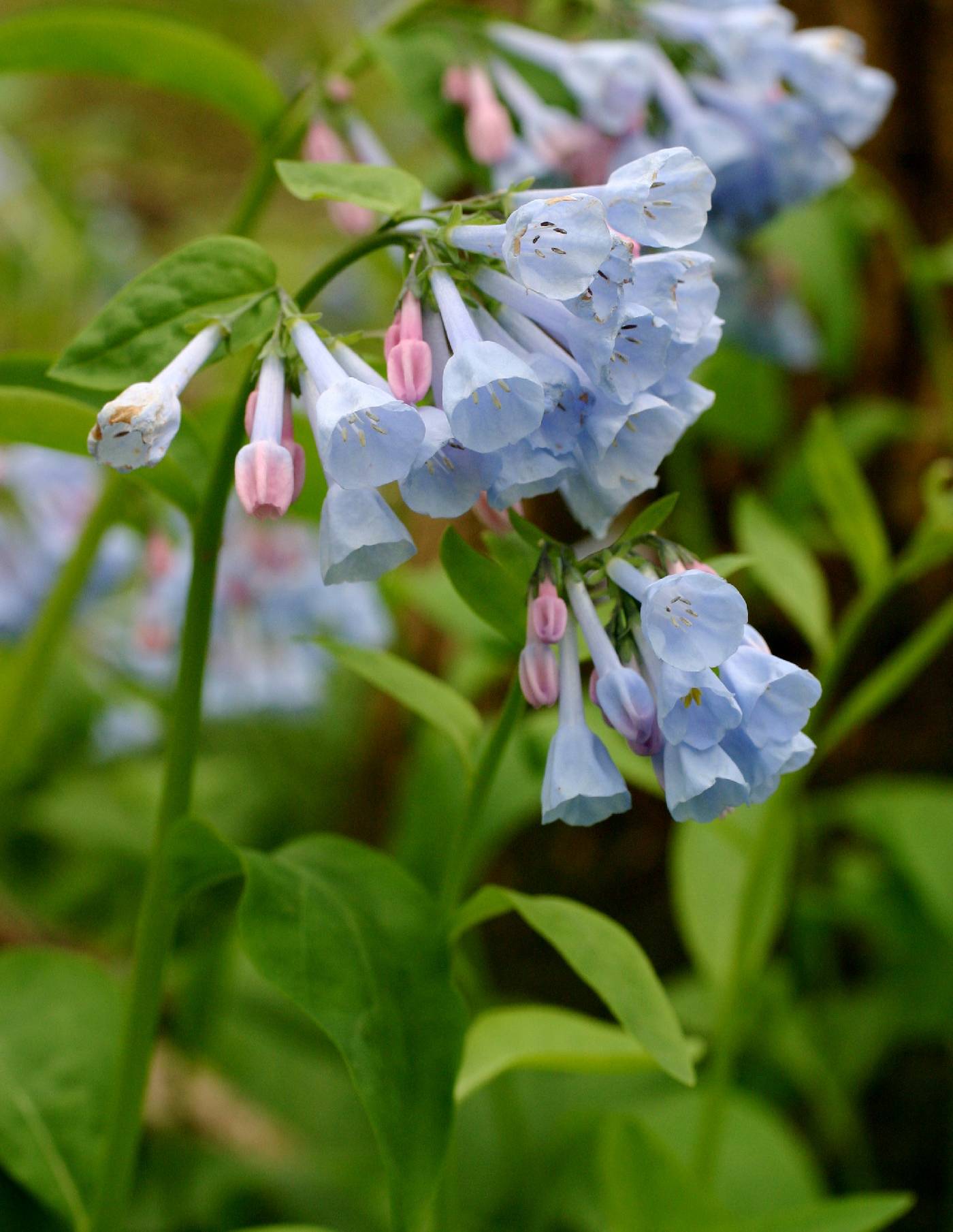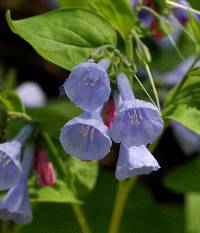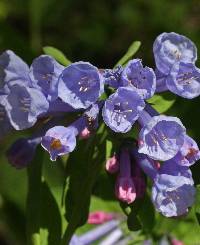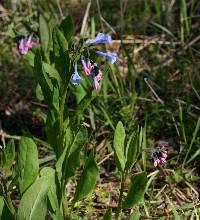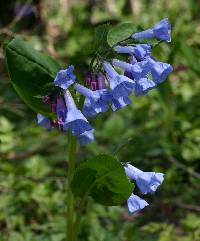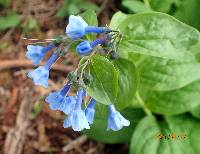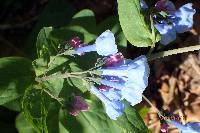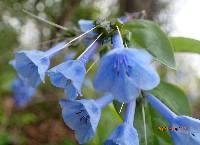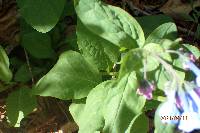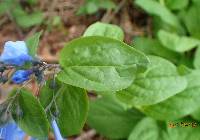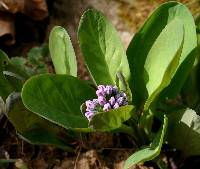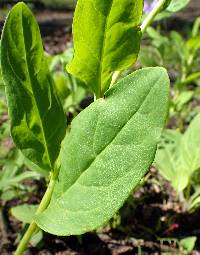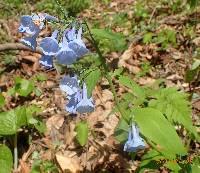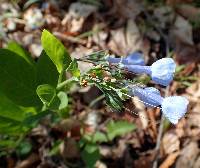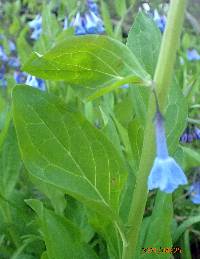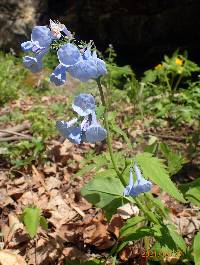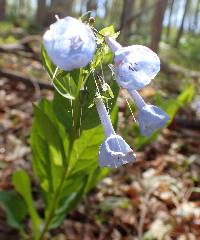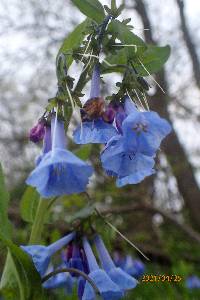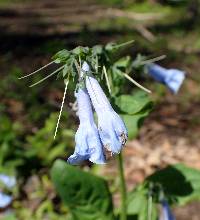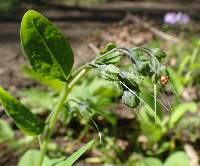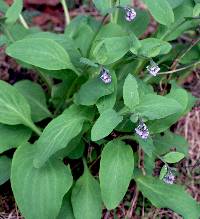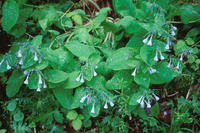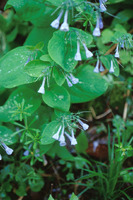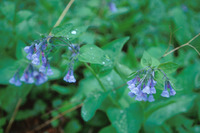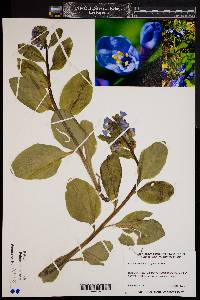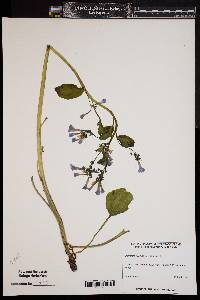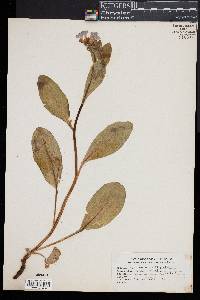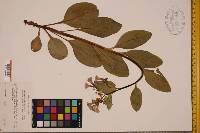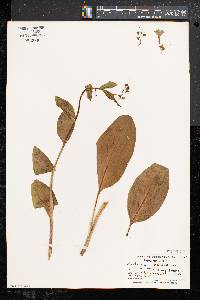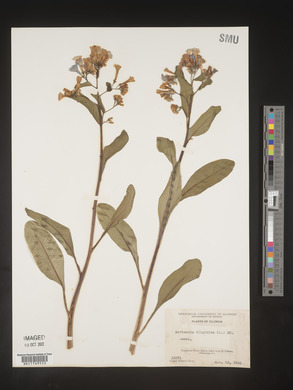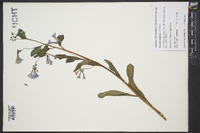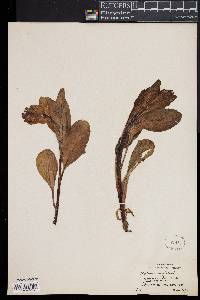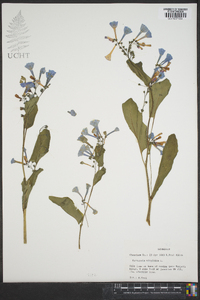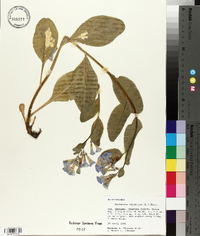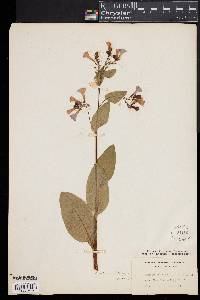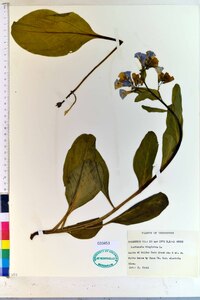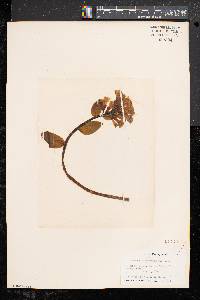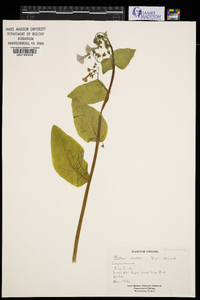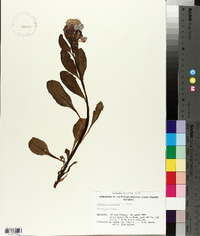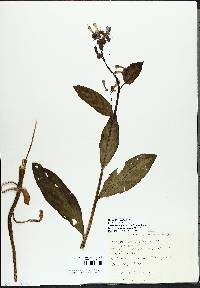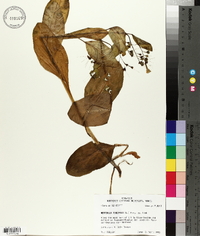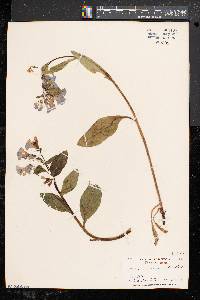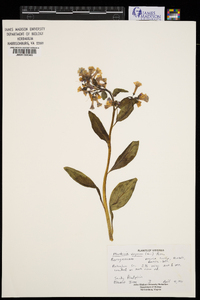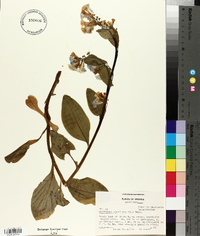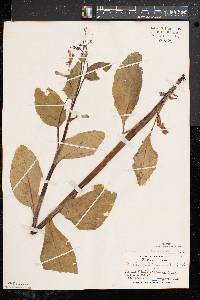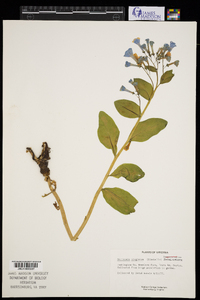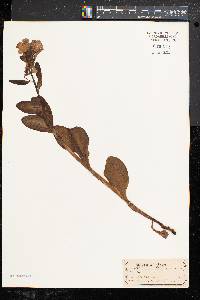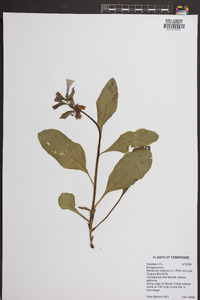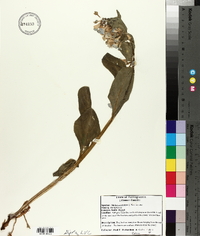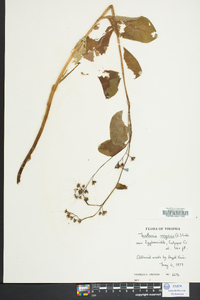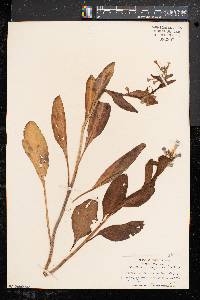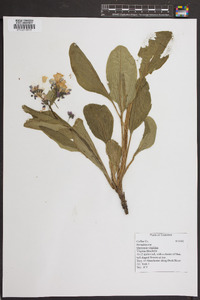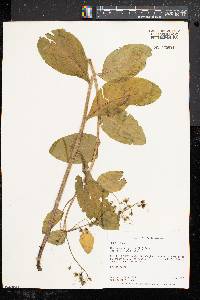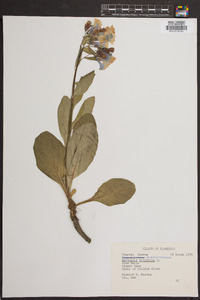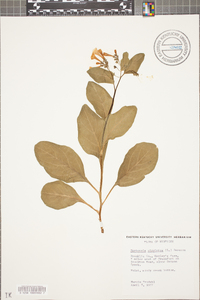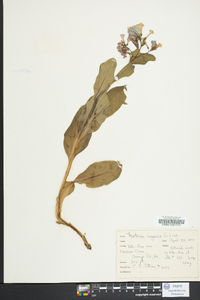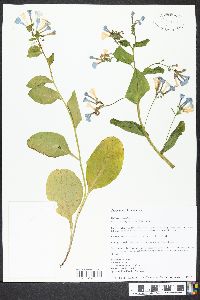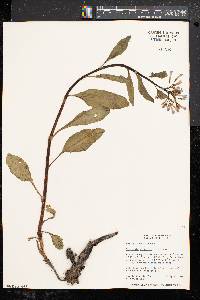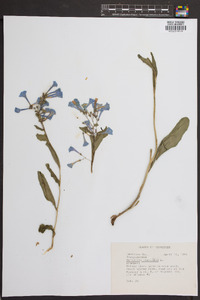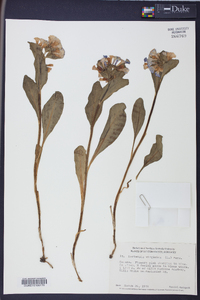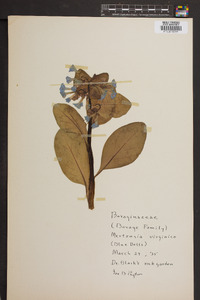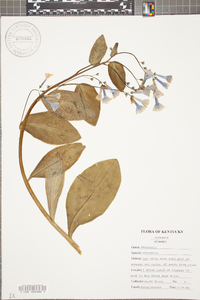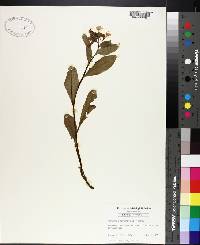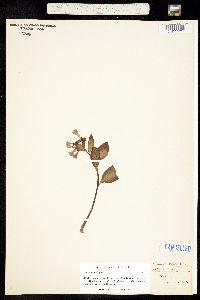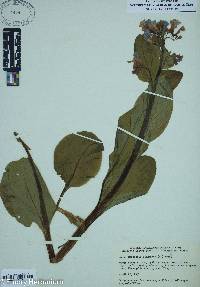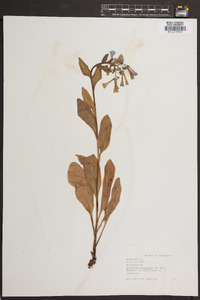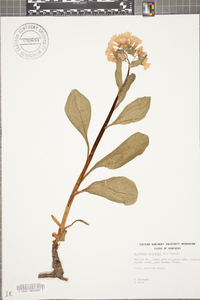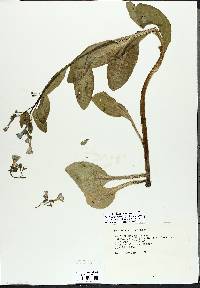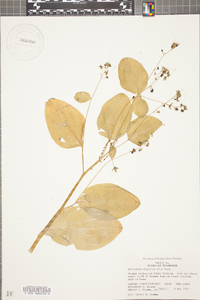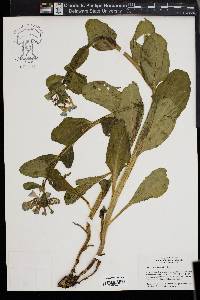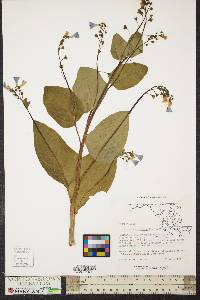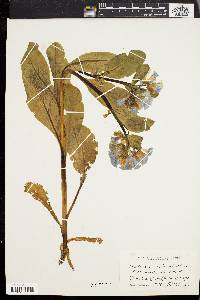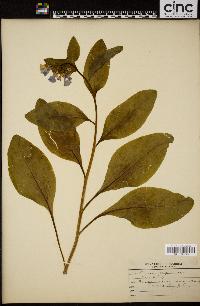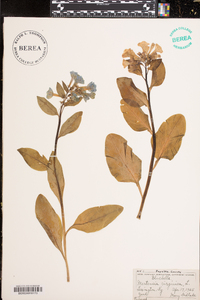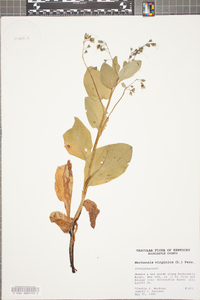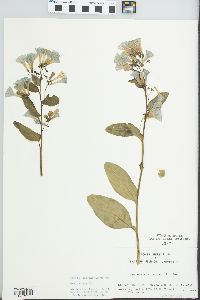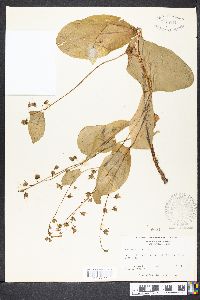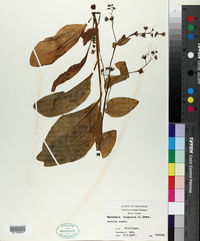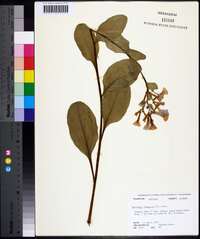
|
|
|
|
Family: Boraginaceae
Virginia Bluebells, more...bluebells, Virginia cowslip
|
Perennial herb 20 - 70 cm tall Stem: unbranched, erect or ascending, somewhat pale grayish green, and hairless. Leaves: alternate, stalkless or nearly so, pale with grayish white coating (glaucous), hairless, non-toothed, 5 - 15 cm long, elliptic to inversely egg-shaped with blunt tips. The leaf size, shape, and stalk length change along the plant, with the basal leaves measuring up to 20 cm long and being long-stalked; the lower leaves are a bit smaller and have long tapering bases with short stalks; while the upper leaves are stalkless and shortest of all, though still relatively large (at least 5 cm long). Inflorescence: terminal, loose, often one-sided, relatively short, spike-like clusters with individually stalked flowers, but no bracts. Flowers: stalked, purplish blue (pink in bud, becoming blue with maturity), 1.6 - 2.5 cm long, radially symmetric, trumpet-shaped or somewhat bell-shaped with narrowed tubular lower portion and more expanded upper half. Sepals: five, but fused for about half their length, then separating into five, broad, obtuse-triangular lobes. The calyx as a whole is hairless, and relatively short (2.5 - 3.5 mm), and many times shorter than the petal tube. Petals: five, but fused their entire length, with a slender, constricted, 1 - 2 cm long basal tube; then expanding above into a shorter (about 0.5 cm), more flaring, cup-like upper portion with vertical ridges or shallow pleats; and the upper edge having five, very shallow and inconspicuous, somewhat rounded lobes. Stamens: five, attached to inside of narrowest part of petal tube, with 1.5 - 3.5 mm long, elliptic anthers, and though not extending beyond the petals still rising past the narrowed basal tube portion. Pistil: with one, deeply four-lobed, superior ovary; and one style elongated beyond the contracted basal portion of the petal tube, but not extending beyond the petals. Fruit: a cluster of four, 3 mm tall, finely roughened, slightly shallowly wrinkled, fairly egg-shaped nutlets attached along their inner sides at or below the middle, surrounding the remnant style, and remaining enclosed within the sepals. Similar species: Mertensia virginica is the only native species in this genus in the Chicago Region, but two other species are somewhat similar. Mertensia maritima is a northern coastal and European species that differs by having smaller flowers (under 1 cm long), and often leaf-like bracts in the inflorescence. Also similar is M. paniculata, a northern boreal species, but the stems, leaves, and sepals are stiff-hairy; the flowers are normally smaller (under 1.5 cm long); and the sepals are more narrow and pointed at the tips. It is possible to confuse this species with Symphytum officinale, but it is a very hairy plant, the stems are winged, the flowers are more evenly tubular, the short petal lobes are pointed and more obvious, the sepal lobes are much longer and more pointed, and the styles are longer than the petals. Flowering: late March to late May Habitat and ecology: Somewhat common in wooded floodplains and mesic woods. It can become naturalized in woods if it escapes from plantings in nearby gardens. Occurence in the Chicago region: native Notes: Mertensia virginica is a very pretty spring wildflower and is often planted in gardens. Author: The Field Museum Erect or ascending, 3-7 dm, glabrous throughout; cauline lvs elliptic to obovate or oblanceolate, 5-15 cm, rounded or obtuse at the apex, the lower long- tapering at base, the upper less so and the uppermost often rounded and sessile at base; sep ovate- oblong, blunt, 2.5-3.5 mm; cor 18-25 mm, the tube longer than the limb; anthers elliptic, 2 mm; 2n=24. Moist or wet woods; N.Y. to Mich., Wis., Io., and e. Kans., s. to Ala. and Mo. Apr., May. Gleason, Henry A. & Cronquist, Arthur J. 1991. Manual of vascular plants of northeastern United States and adjacent Canada. lxxv + 910 pp. ©The New York Botanical Garden. All rights reserved. Used by permission. From Flora of Indiana (1940) by Charles C. Deam Local throughout the area indicated on our map but usually frequent to abundant where it is found. All but three of our specimens are from wooded flood plains and wooded terraces of streams. These three are from rather sandy woods. I have seen it also as a common plant on a rocky, wooded hillside about three miles southeast of Dillsboro, Dearborn County. This species does well in cultivation but prefers partial shade. .…… Indiana Coefficient of Conservatism: C = 6 Wetland Indicator Status: FACW |
|
|
|

